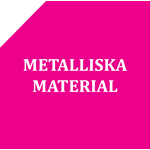Projektinitiativ #71: New means to predict the benefits of clean steels in heavily loaded components ( 1 kommentar)
Steel manufacturers need to provide reliable fatigue data about their products in order to enable the use of ultra-clean steels in heavily loaded components.
Jerome Senaneuch presents the initiative during the 2017 conference
The strength demands on heavily loaded components are continuously increasing. There is a strong need to transfer higher loads and/or reduce weights. New solutions are required. Today’s component designs are demanding more from the materials than they used to. The next generation of components will require new better steels than those used today.
When a steel reaches a given hardness its fatigue properties are governed by the inclusions present in the steel. Focus has been on reducing the size of inclusions in steels in order to increase the fatigue properties. Today’s ultra clean steels have so few inclusions that can initiate a fatigue crack that classical methods for evaluating the fatigue properties are difficult to apply. The required material volume to be tested in order to get a reliable evaluation of the fatigue performance of a component is beyond what is commonly acceptable in terms of time and cost. This applies in particular to surface hardened components where many practical constraints limit the volume tested in fatigue.
The proposed approach is to use a combination of modelling and experiments. The experimental part is a reliable and rapid way to obtain the distribution of intermetallic inclusions. The model takes into account this distribution, the hardness of the material – hardening depth and core hardness – and the residual stress field in order to calculate the fatigue limit. Based on the model a component manufacturer will be able specify what distribution of inclusion is allowed for a specific component and thereby select the right type of steel.
Namn Jerome Senaneuch
Organisation Swerea KIMAB
Kommentar #1
This project proposal address the importance of describing the true distribution of defects in commercial steel. This will enable future implementation in FEA software in order to predict the technical fatigue life for arbitrary geometries (load, volume and direction). The main challenge i to capture the defect distribution in 3D, i.e. both rolling direction and transverse to this.
If successful the project will provide with new tools for the designers and can be used when selecting what steel quality that should be used in a certain component.
A continuation of the project should also outline a way forward how the true distribution of defect could be generated on a routine bases, i.e. on the actual delivered lot of material. This probably require a combination of methods such as high frequency ultrasonic and microscopy. Perhaps also a steel making approval process.
Ovako is positive to this initiative and can provide with numerous of empirical datapoints and also testing exoerience (transerse testing by friction welding samples)
Namn Patrik Ölund
Organisation Ovako Sweden AB

